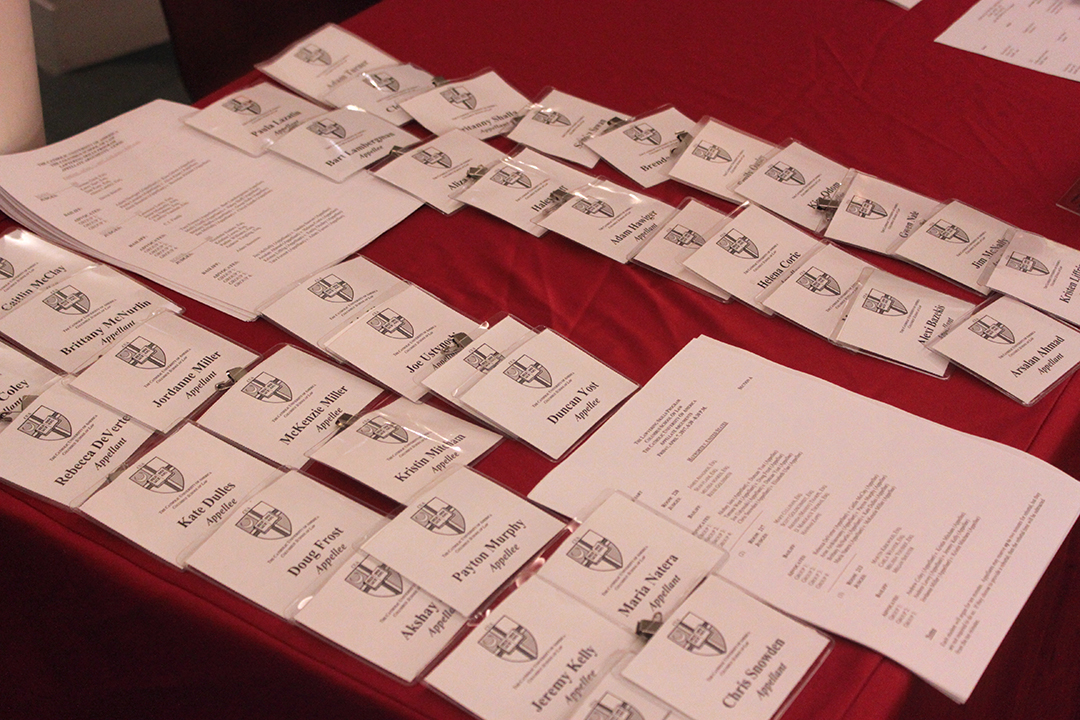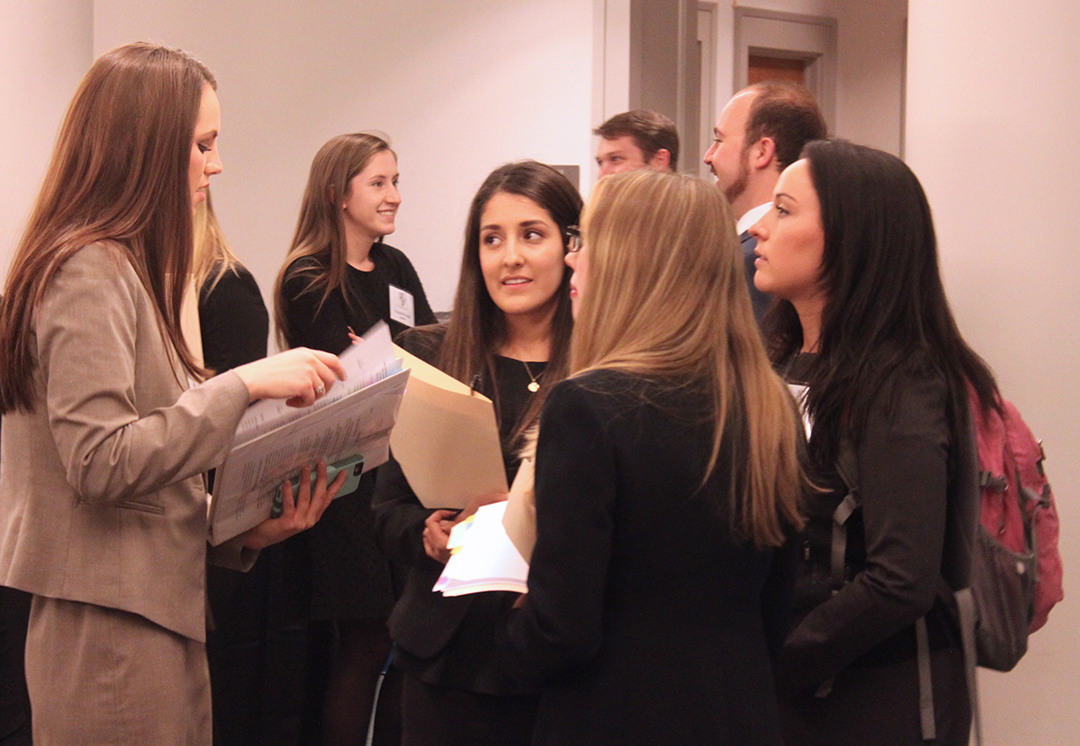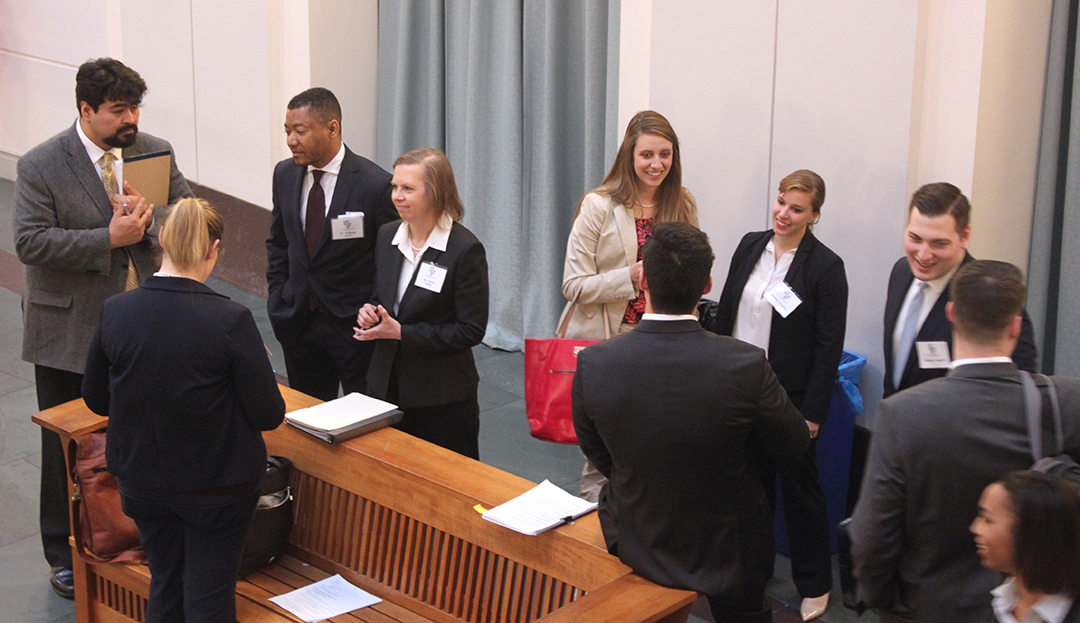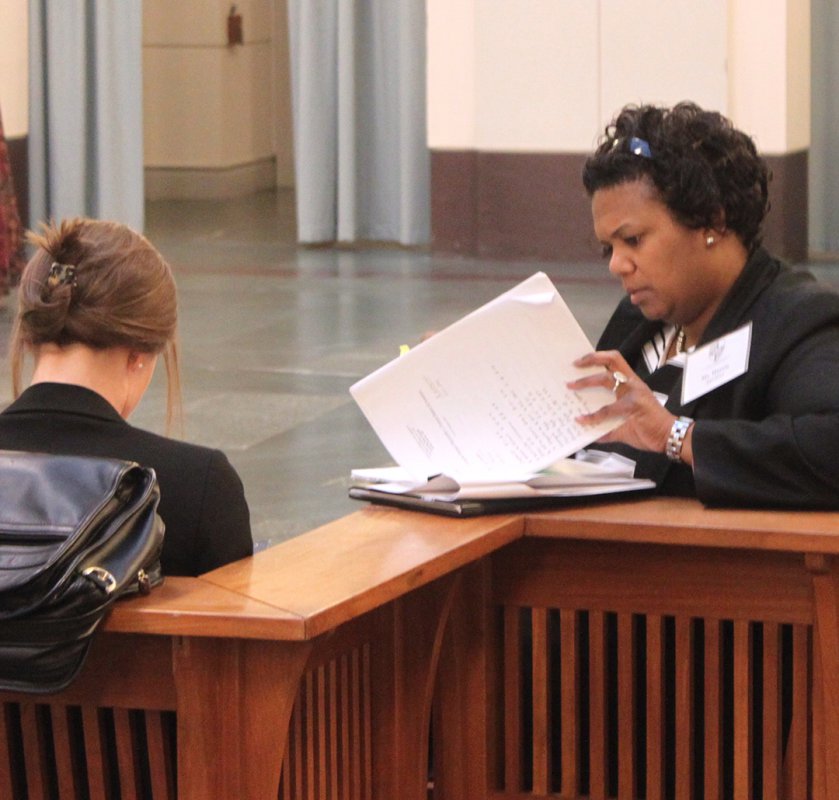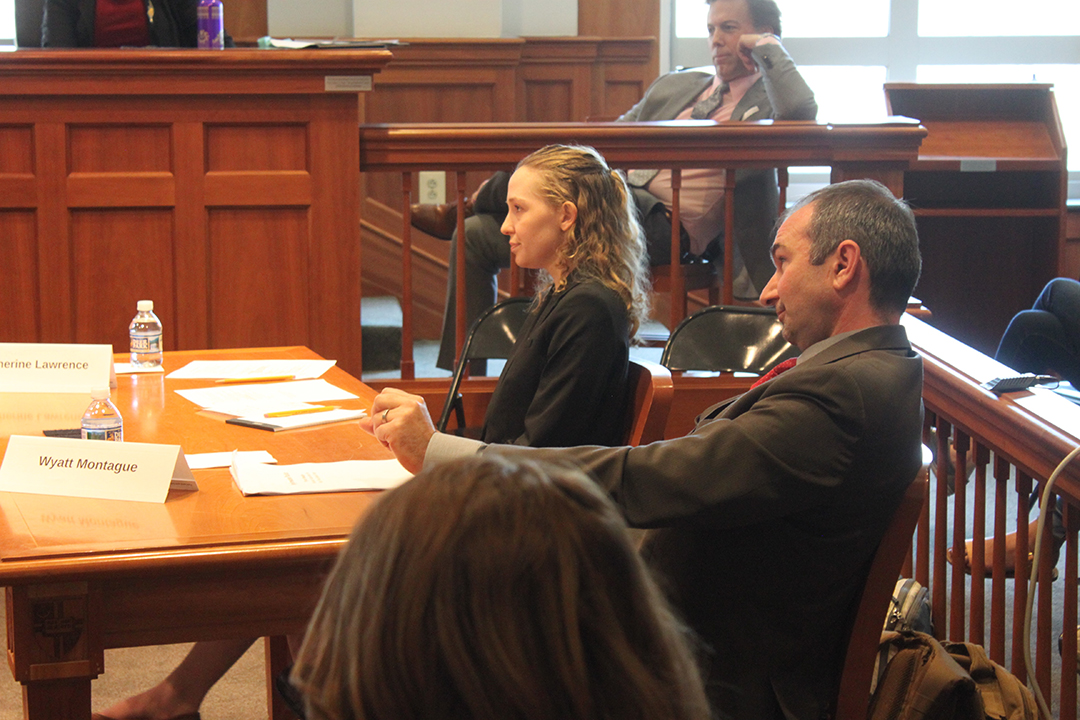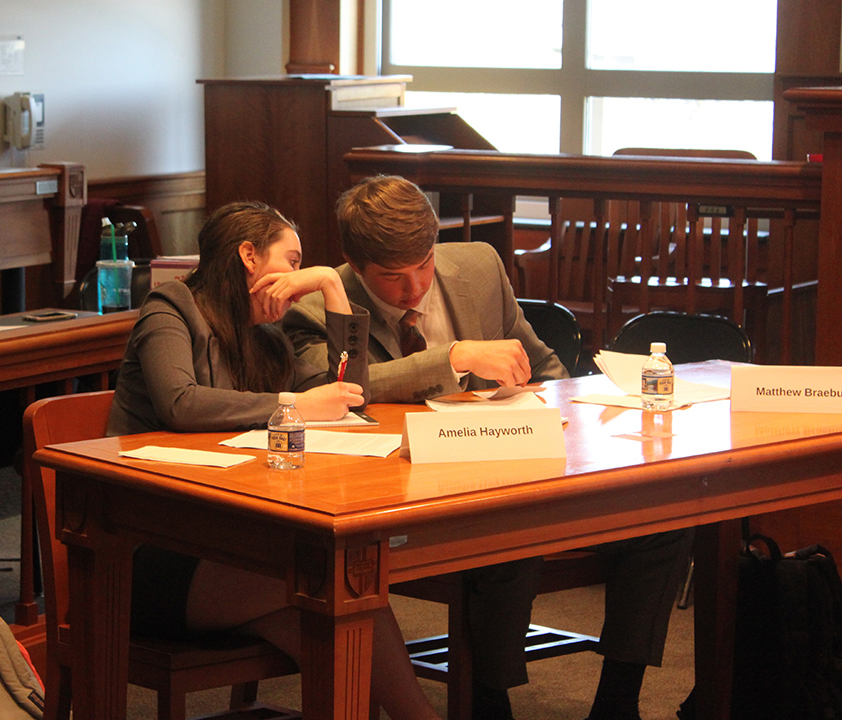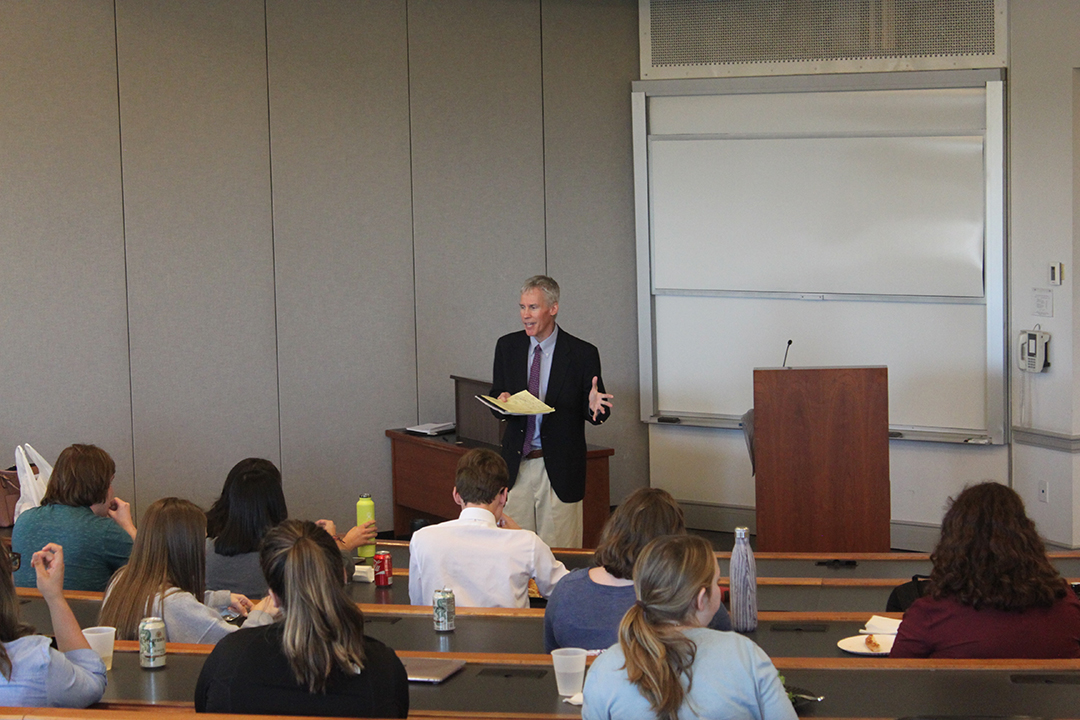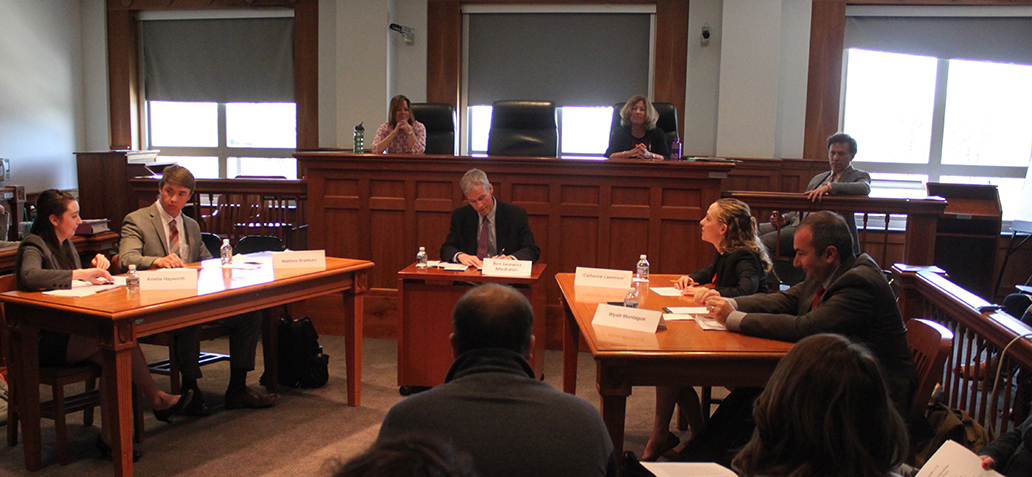
(April 10, 2017, Mediation)
Like characters from a favorite TV show, Amelia, Matthew, Catherine, and Wyatt all have their fans as well as their detractors. Now, the law student audience held spellbound by the semester-long program, "Amelia Starnes Hayworth v. United States of America" has seen its issues wrapped up in the final episode and finally put the series to bed.
The case is not a real TV show, of course, but rather a stirring legal drama that sprang from the mind of Catholic University law school Professor A.G. Harmon, who for several years has concocted complex and realistic legal potboilers that provide a learning platform for first-year Lawyering Skills Program (LSP) students about the critical skills of legal mediation.
Harmon's simulated mediations are brushed with the touch of the published novelist that he is, and difficult to distinguish from real-life news headlines. That is his intent.
This year's case played out on April 10 in the law school's Haislip Courtroom, where law school student-actors volunteered to take on the scripted roles of the major players in Amelia Starnes Hayworth v. United States of America.
In a nutshell, the case involves a hospital that is being sued by a former patient under the Federal Tort Claims Act for up to $7 million after she contracted a staph infection during her stay there. The fictional facility, Alta Vista Medical Center, is on the outskirts of San Diego and owned and operated by the Indian Health Service, a division of the United States Department of Health and Human Services. The action is filed in the U.S. Court of Appeals for the Ninth Circuit.
The appellant, Amelia Hayworth, and her attorney, Matthew Braeburn, sit on one side of a table, faced by the government's counsel, Catherine Lawrence, and hospital administrator Wyatt Montague. Between them sits Ben Jacewicz (real name), who is an attorney and professional mediator in Fairfax County, Va., and who has donated his time to the exercise for the last five years.
The motives appear simple enough. The plaintiff wants the biggest settlement she can get, while the hospital wants to avoid a ruinous financial penalty and any more bad publicity. Both sides appeal to the mediator for satisfaction.
What makes the mediation simulation beguiling to observing LSP students are the hidden motivations of the two principals and their attorneys, all of whom harbor secret fears, worries, and facts concealed from each other and from the mediator. This information is provided to students at the start of the exercise.
Hayworth, for example, is facing a pending DUI charge that could get her fired under the morality clause of her employment contract if word of the incident got out. The other lead characters have similar torments and anxieties.
By constructing his simulated mediation characters as lifelike as possible, Harmon is communicating an important truth to students.
"Legal mediation is a complex process and one that must be patiently worked though, taking the vagaries of human nature into account," he says. "Students learn that while a trained professional mediator follows certain guidelines and procedures, no two cases are ever exactly alike."
Once the mediation was completed Jacewicz joined the students to discuss the mediation exercise and take questions.
The mediation reflected the parties' efforts to resolve a pending appeal before the United States Court of Appeals for the Ninth Circuit by Plaintiff-Appellant, Amelia Hayworth. All 1L students presented oral arguments in this matter before three-judge alumni panels during their capstone Appellate Arguments on Friday, April 7. More than 50 dedicated alumni generously offered their time for the Appellate Arguments.
The Cast
Caroline Lannon played the Appellant, Amelia Hayworth
Evan Berlanti played her attorney, Matthew Braeburn
Haley Hoff played Dept. of Justice Counsel, Catherine Lawrence
Doug Frost played Hospital Administrator, Wyatt Montague
Click here to view photos on CUA Law's Facebook page from April 7 and 10.
